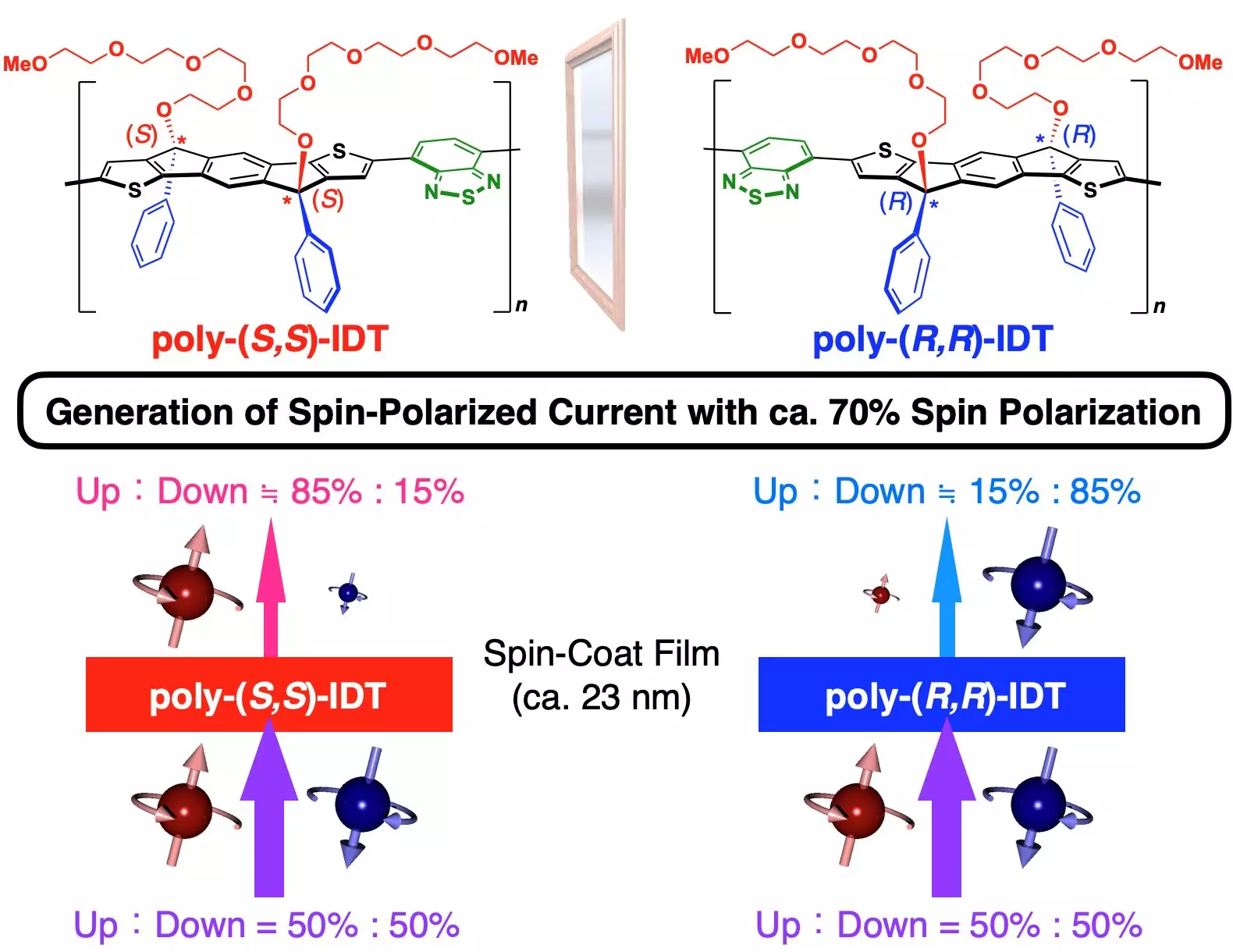Chirality, a property of asymmetry where molecules exist as mirror images, plays a crucial role in many physical and biological processes. These mirror-image molecules, known as enantiomers, exhibit distinct interactions with light and electrical currents, dependent on their “handedness.” Understanding chirality is essential for advancing technologies in areas like pharmaceuticals and, notably, spintronics—the technology that leverages electron spin alongside traditional charge transport to create new functionalities in electronic devices. Recent advancements from Osaka University highlight the significant strides being made in the synthesis and application of chiral polymers.
Researchers at Osaka University have successfully synthesized chiral copolymers that boast exceptional spin polarization characteristics. The focus of their study involves a specific chiral indacenodithiophene (IDT) derivative, which acts as a monomer unit in the formation of these copolymers. This development is pivotal, as the craftsmanship of the polymer’s backbone ensures that the materials not only possess chirality but also exhibit enhanced performance in electronic applications.
By utilizing spin-coating techniques, the researchers were able to generate thin films of these chiral copolymers effectively. The simplicity of the spin-coating process contrasts sharply with previous methods that often involved elaborate synthesis pathways, thereby making this approach more practical for real-world applications in the field of spintronics.
The team undertook a rigorous examination of chirality-induced spin selectivity (CISS) in their copolymer films. Using an atomic force microscope combined with strategic polarization techniques, the researchers were able to observe the unique behaviors exhibited by the polymers when subjected to electrical currents with opposing polarization orientations. A neodymium magnet was employed to establish these polarized currents, enabling the investigation to measure the spin polarization transmitted by the films.
The results were noteworthy—these copolymer films achieved an impressive spin polarization of nearly 70%. Such performance not only places them among the leading chiral polymers available but also implies that they can be utilized as effective spin filters in various electronic applications. This capability sets the stage for significant developments in the realm of spintronics, allowing devices to operate more efficiently and with greater functionality.
With the robust performance of IDT copolymer films in providing spin-polarized currents, the implications extend far beyond basic electronic applications. The potential for integration into advanced clean energy technologies is particularly promising. As the world moves towards sustainable energy solutions, the ability to harness and utilize spin-polarized currents could revolutionize how electronic devices are powered and how they operate.
The advancements made by the research team at Osaka University not only emphasize the importance of chirality in molecular technologies but also showcase a clear pathway for expanding the role of chiral polymers in the burgeoning landscape of spintronics. As research in this area progresses, there is no doubt that innovations such as these will pave the way for next-generation electronic devices, ultimately leading to more efficient and sustainable technology development.


Leave a Reply